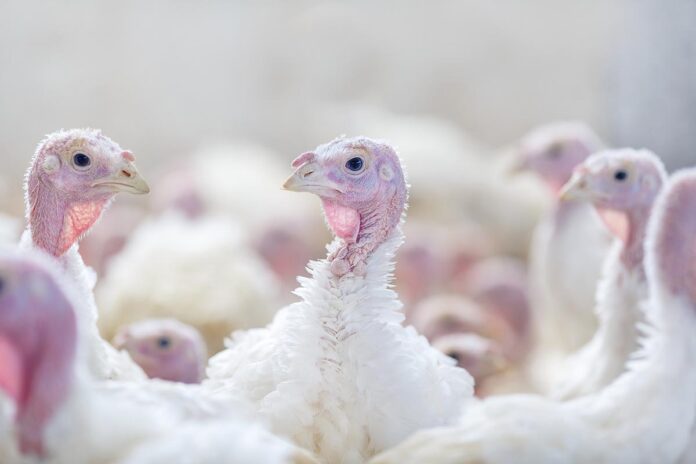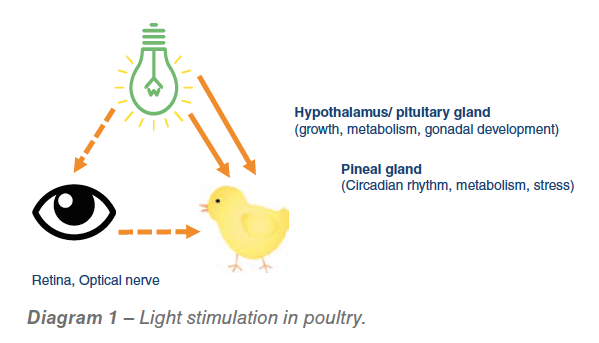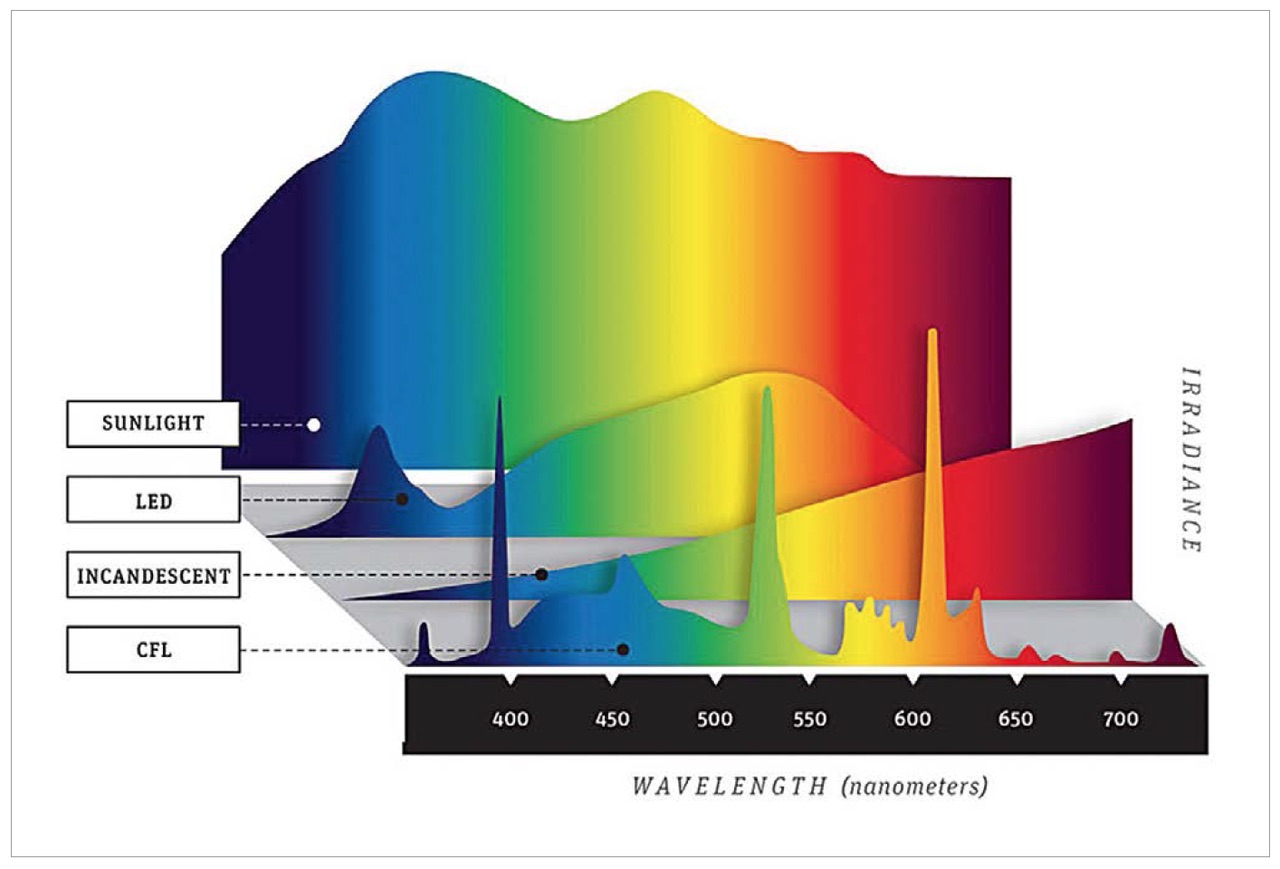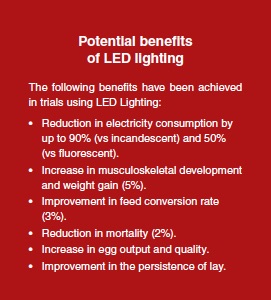
Many poultry producers appreciate the importance of light in maximising performance. Whether chickens or turkeys, laying hens, commercial growers or parent stock, all poultry will perform better when the lighting is right.
The time is fast approaching when LED becomes the only lighting option available. With many producers installing LED schemes already, now is an excellent time to understand the benefits and embrace what this technology has to offer.
LED lighting is known to reduce energy costs compared to conventional technology, be that incandescent, fluorescent CFL or halogen. Indeed, LEDs are so efficient that the EU estimates that switching Europe over to LED will save the equivalent of Portugal’s electricity consumption and cut annual carbon emissions by 15.2m tonnes!
So what other benefits does LED bring? The most significant of these is to welfare. A well-designed lighting scheme has been proven to enhance performance simply by minimising stress, and LED offers tremendous flexibility, in terms of both colour spectrum and dimmability, to achieve the optimum result.
To understand how lighting can impact on the performance of poultry, it helps to go back to biological ‘first principles’. Poultry have large, highly sensitive eyes and perceive light differently to humans. For example, unlike humans, birds are sensitive to ultra-violet light. Lighting developed for humans can therefore have drawbacks when used for poultry.
Light is perceived by poultry not only through the eye, via the retina, but also through the skull. Light entering the brain through the skull directly stimulates the pineal gland, which regulates daily behaviour cycles; and also the hypothalamus, which regulates metabolism and reproduction. Light perceived through the eye also impacts the hypothalamus and pineal gland, but indirectly. At low levels of light intensity, light does not penetrate the skull and it is the light perceived via the retina which drives the bird’s circadian rhythm (see Diagram 1).

So how does this impact on the design of a poultry lighting scheme?
Firstly, due to the sensitivity of the eye, it is important to choose a light sourcewhich is as close to the natural daylight spectrum as possible. Incandescent performs fairly well in this respect, matching daylight well at the warm end of the colour spectrum. Fluorescent lighting, on the other hand, performs badly across the whole spectrum. LED Lighting offers the closest match to the Daylight profile, delivering across the colour spectrum (see Diagram 2).

The ability to dim lighting is also very important. As noted above, poultry have a circadian rhythm, which responds to changes in the intensity of light, and they thrive better in more natural lighting environments. Using dimmable lighting to mimic sunrise and sunset provides a more comfortable environment for birds, allowing a better transition from sleeping to waking and vice versa. Modern LED products are able to offer smooth dimming from 0-100% of the maximum light output, and by using LED lights coupled with a programmable dimmer the sunrise/sunset effect can easily be achieved.
It has also been shown that switching lights on and off startles birds, causing stress, which naturally affects performance. Again a dimmable LED lighting system avoids this.
In addition to light intensity (dim/non-dim), the colour temperature of lighting has been found to have a significant impact on different stages of poultry production. Research has shown that a colour temperature of 5000K (a cool white light) encourages poultry to be more active, helping to promote feeding, and is therefore ideal when looking to maximise growth rates.
On the other hand, a colour temperature of 2700K (warm white, similar to a traditional 60W incandescent bulb) has been proven to maximise egg production. LED Lighting can meet both of these needs.
Another issue which can impact poultry welfare is flicker. In the wild, poultry are constantly on the lookout for birds of prey. They are programmed to notice changes in the light above, which might indicate the presence of such predators. Flicker in lighting systems, which may be imperceptible to human eyes, is perceived by poultry as a predator threat. Minimising or indeed eliminating flicker helps provide a safe, comfortable home for poultry and can significantly reduce stress.
Fluorescent lighting in particular has a very poor flicker profile, while high quality LEDs are flicker-free. Moving from fluorescent to flicker-free LED should provide a noticeable reduction in stress in the poultry population, thereby increasing performance, reducing undesirable behaviour such as pecking, and increasing resistance to disease, all of which can significantly reduce mortality rates.
So the perfect lighting system would mimic the colour spectrum of daylight; offer smooth dimming control to mimic sunrise & sunset; provide a colour temperature suited to the developmental stage of the birds; and avoid flicker. But what about cost?

Price is all too often the primary consideration when purchasing a new lighting system, but this approach can lead to false economies. With electricity representing a significant proportion of the cost of raising poultry, the energy savings offered by LED Lighting rapidly compensate for installation costs. Payback periods of 6-18 months are readily achievable.
The longer lifespan of LED products tips the balance further in its favour. Better quality LED products can last at least 5 years, thus saving energy and maintenance costs. But it is the evidence for improved welfare and performance which has made the case for LED lighting even more compelling and is persuading more and more breeders to make the switch.
The somewhat complex relationship between lighting and poultry welfare outlined above means that it is critical to choose a lighting supplier with experience in the poultry industry who can offer high quality, flexible LED products and a lighting design tailored to each individual unit. Time spent upfront in planning will ensure that any investment in new lighting has a positive impact both on the poultry and on the bottom line.

















